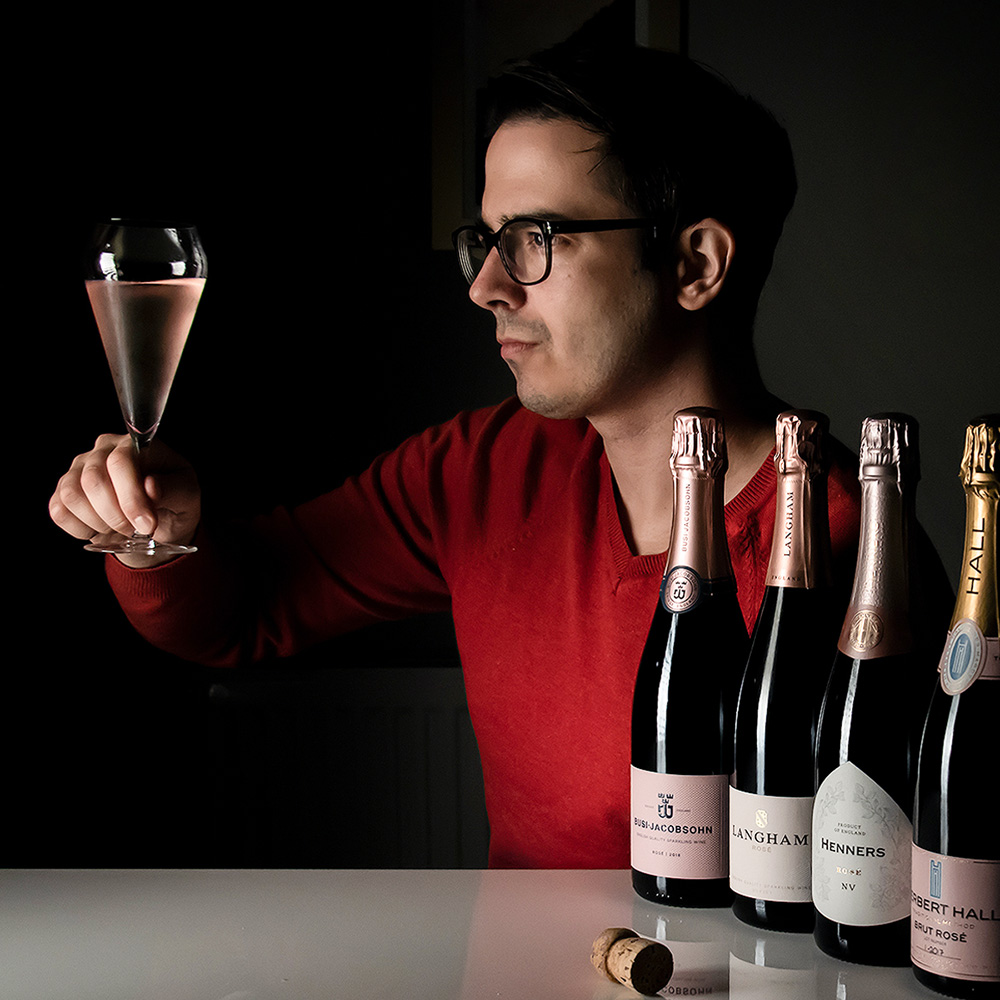
Balfour Winery has been one of the most progressive producers in England for a good number of years. Founded in 2004 by Richard Balfour-Lynn, the winery has expanded considerably beyond its vision of being England’s answer to Champagne’s Billecart-Salmon Rosé. Indeed, it’s range of wines now extends to well over forty different releases, from the brilliant Balfour Brut Rosé to a solid line-up of still wine expressions and countless exciting and limited-edition releases.
Last year saw Balfour, led by winemaker Fergus Elias, release their first single variety Balfour Albariño 2022. An English take on the classic Galician grape, the wine was received with much acclaim from critics and English Wine followers including myself. With the follow-up vintage having now been released, plus the 1503 Albariño 2023 available exclusively in Majestic, I caught up with Fergus to discuss his journey so far with the grape.
John: Let’s start with “why Albariño?” How did it happen at Balfour?
Fergus: “It actually started with Dad. He planted Albariño back in the early 2000s for Chapel Down, at their Sandhurst site—which is a decent spot. He always believed Albariño could work well in the UK, mainly because of its thick skins. That means you can give it real hang time. As long as the canopy’s intact, it keeps ripening.
When we began expanding our vineyards at Balfour between 2018 and 2022, one of the sites we planted was called Savage. It’s a beautiful south-facing slope on greensand in Kent—you can see it from the home vineyard. We’re right on the edge of the Weald: clay where we are, then the greensand ridge just beyond. It’s a site we really liked, and the early harvests were excellent.
There was a block that had been used for walnuts and, once they were pulled out, we talked about what to plant next. The obvious choice was some top Pinot Noir clones, maybe a premium red project—but by that point we already had some excellent Pinot sites in Kent and Essex. And while you can never have too much Pinot, we also wanted to try something different.
So we decided to experiment with Albariño. We started small—just an acre in 2019. That’s since grown to about 2.5, maybe 3 acres.
The first crop came off in 2021 and went into that year’s Leslie’s Reserve blend. We picked it on the 12th of November, and it could’ve happily hung on for another week. Hang time really is key with Albariño. In 2021 we picked a tonne, then in 2022 we brought in three tonnes, almost a full press load, on the 2nd of November. I’d actually finished the rest of harvest on the 12th of October and then waited three weeks just for the Albariño.”
John: The 2022 Albariño was a real standout for me. First taste and I thought—yes, this is something.
Fergus: “It was 2022, so the acids were naturally lower. We let it go through partial Malo—about 2g/L of malic left in the end. We’ve got three different clones of Albariño, and while I can’t always press them separately, I’ve been experimenting with yeast strains that suit English-grown fruit. I was in an artistic mood that year—wanted to keep some acidity, didn’t want full Malo, and yes, I wanted my cake and to eat it too. It got some lovely press coverage, and we’re really proud of it.”
John: So let’s talk about the 1503 Albariño. That’s the Majestic exclusive—what’s the story there?
Fergus: “We’ve always had the 1503 wines in Majestic, but this was about broadening that range. Creating a go-to English still wine felt like a nice opportunity. I loved making it. It’s full Malo, TA down to 6.4—perfect for me for still wine. It probably came in at around 9.5 before Malo, so it’s softened nicely. There’s maybe 1.5g/L of lactic acid in there now. Still bright and English, but with a little more generosity. pH was 2.98 in the end—right where I like it.
And from a winemaking point of view, this gave me real creative freedom. I can’t think of a better place to be.”
John: Now onto the Balfour ‘Blue Label’ Albariño 2023. How’s that different from the 1503?
Fergus: “This is our own-label Albariño, and I didn’t want to just remake the same wine. We make 45 SKUs at Balfour, and every one of them is individual. That matters to me.
The 2023 Balfour Albariño had a slightly different press cut, different yeasts, and about 10% of it was barrel-fermented for a bit more weight and texture. TA was around 7, and pH just over 3—3.02. It went through full Malo too. On paper, it’s not dramatically different, but in the glass, it really is.
It had some barrel age and longer time in tank. I’m a big believer in lees ageing. We gave it serious hang time—finished main harvest on 27 October, and brought the Albariño in on the 15th of November. That’s the latest I’ve ever picked fruit. But the skins were pristine. No rot, no disease. Acids at picking were around 10, and the crop was big—8 tonnes. A proper, commercial harvest.”

John: And now for the third wine—this one’s really something else.
Fergus: “This was just a bit of fun. It’s called Balby. It’s the pressings from the 2022 Albariño, straight into barrel—high turbidity, wild ferment, full spontaneous Malo. We left it for a year and a half and did absolutely nothing to it. It’s American oak, unfiltered, unfined—the biggest piece of winemaking by neglect I’ve ever done.”
John: It’s fascinating—textural, vibrant. Could this become a whole new angle for Balfour? A more experimental sub-label?
Fergus: “Another range of wines, John, just what we need!”
John: You’ve only got 45, Fergus…
Fergus: “Exactly. We only made 200 bottles of Balby, but it’ll find a label eventually. It’s delicious, and it’s something no one else in England is making.”
John: It’s such a contrast to the other two—same grape, but totally different energy.
Fergus: “Totally. Balby had 8g/L of acid, no residual sugar, pH 3.05. So not wildly different analytically, but all that time in oak really balanced it out. I literally ran the press straight into the barrel, threw a bubbler in, and left it. That’s it.”
What I like is it gave me a reference point. It showed me what maximum barrel exposure does to Albariño, so when I came to blend the 2023 Balfour, I could draw on that and dial it in—stay true to our house style, but broaden the palate, add a bit more texture and depth.”
John: Obviously there’s a lot of parallels between wine 1 and 2, but you can see where the second one has that slight elevation on texture, and then the third wine just takes it off on a different tangent, which is quite exciting!
So, what’s next for Balfour Albariño then?
Fergus: “More barrel work and further development stylistically. At some stage I’d like to make a sparkling though this might be some time. The ’24 is particularly interesting, especially when you consider the backdrop of that year–rather demonstrates that this variety truly can work in England even in the toughest of conditions.”




